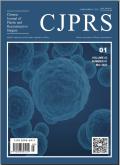临床报告心理下脂肪评定量表中文版的开发与验证
Chinese Journal of Plastic and Reconstructive Surgery
Pub Date : 2025-03-01
DOI:10.1016/j.cjprs.2024.12.003
引用次数: 0
摘要
背景颏下脂肪过多(SMF)是一个常见的面部美学问题,评估量表在其评估中起着至关重要的作用。尽管遗传背景对SMF分布有显著影响,但现有的SMF量表是基于高加索人群的。因此,本研究旨在开发和验证一个5分的中文版临床报告心理下脂肪评定量表(CR-SMFRS)。方法本研究包括150名志愿者,并对每个参与者的正面、倾斜和侧面照片进行组合。首先设计了一个带有描述性标准的5分制量表。内部验证由三名经验丰富的整形外科医生参与,而外部验证由另外六名评分员对50名志愿者进行。评估了内部和内部的信度。结果建立了具有描述性标准的5分制评定体系,并经验证为中国CR-SMFRS。内部验证显示了良好的内部和内部一致性。外部验证时,各评分者的类内相关系数值均超过0.850,表明评分者的类内一致性较高。量表间信度具有较好的一致性。结论中文版SMF评定量表是临床使用的可靠工具。本文章由计算机程序翻译,如有差异,请以英文原文为准。
Development and validation of the Chinese version of the Clinician-reported submental fat rating scale
Background
Excess submental fat (SMF) is a common facial aesthetic concern, and assessment scales play a crucial role in its evaluation. Existing SMF scales are based on Caucasian populations, although genetic background significantly influences SMF distribution. Therefore, this study aimed to develop and validate a 5-point Chinese version of the Clinician-Reported Submental Fat Rating Scale (CR-SMFRS).
Methods
The study included 150 volunteers, and captured photographs from the frontal, oblique, and lateral views were combined for each participant. A 5-point scale with descriptive criteria was primarily designed. Internal validation involved three experienced plastic surgeons, while external validation was conducted on 50 live volunteers by six additional raters. Intra- and inter-rater reliability were assessed.
Results
A 5-point grading system with descriptive criteria was developed and validated as the Chinese CR-SMFRS. Internal validation demonstrated a good intra- and inter-rater consistency. During external validation, intraclass correlation coefficient values for each rater exceeded 0.850, indicating high intra-rater consistency. Moreover, the inter-rater reliability showed good consistency.
Conclusion
The Chinese version of the SMF rating scale is a reliable tool for clinical use.
求助全文
通过发布文献求助,成功后即可免费获取论文全文。
去求助
来源期刊

Chinese Journal of Plastic and Reconstructive Surgery
Surgery, Otorhinolaryngology and Facial Plastic Surgery, Pathology and Medical Technology, Transplantation
CiteScore
0.40
自引率
0.00%
发文量
115
审稿时长
55 days
 求助内容:
求助内容: 应助结果提醒方式:
应助结果提醒方式:


